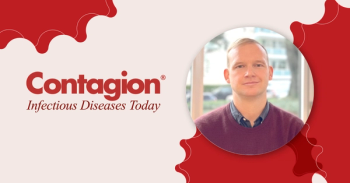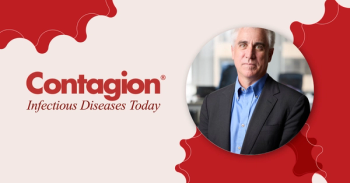
Medical Importance of Microbial Biofilms in the Management of Infectious Diseases
Biofilms are an emerging clinical problem despite the fact that most clinicians don’t even think of biofilms when managing infections.
Microbial biofilms are associated with and impact the management of over 75% of all infections. The effects of biofilms are seen primarily in 4 ways by facilitating the emergence of antimicrobial drug resistance, generating chronic infections, the modulation of host immune response, and the contamination of medical devices. The biofilm lifestyle also enhances the survival of microorganisms in adverse environmental conditions.
Biofilms can be formed by either a single (monomicrobial) or multiple (polymicrobial) species of organisms. Metagenomic analysis of human microbiota suggests that in the human body most microbes exist as polymicrobial biofilm. The National Institute of Health estimates that as high as 80% of clinical infections have biofilm origin.
Drug Resistance
Antimicrobial drug resistance is 1 of the hallmark characteristics of microbial biofilms. Microbial cells associated with matured biofilms can be as much as 1000-fold more tolerant/resistant to antimicrobial drug therapy than their planktonic cell counterparts. It is believed that the extracellular matrix of the biofilm is primarily responsible for the high-level tolerance/resistance to antimicrobial drug treatment by acting as a physical barrier for the permeation of the antibiotic. Recent studies have shown that other conventional drug resistance mechanisms, found in planktonic cells, also exist in microbial biofilms.
Horizontal gene transfer (HGT) is the process by which bacteria can transfer genetic material from cell to cell by either transformation or conjugation or transduction.1 During natural transformation bacterial DNA from lysed cells is taken up by actively growing competent cells of the same species (intraspecies transformation) or a different species (interspecies transformation) and incorporates into their own genome by genetic recombination. Any genetic traits such as antimicrobial drug resistance will be retained by natural selection.2 HGT markedly facilitates interspecies and intraspecies transmission of antibiotic resistance determinants among bacterial cells in biofilms.3 It has been shown that the frequency of HGT in biofilm (1.9 x 10-4) is almost 16,000 times higher than that in planktonic cultures (1 x 10-9) underscoring the importance of HGT for antimicrobial drug resistance in microbial biofilms.4
Recent studies on biofilm specific high-level tolerance/resistance to antimicrobial drugs revealed the presence of other well-known drug resistance mechanisms in biofilm embedded cells. These mechanisms are commonly found in planktonic cells and many microbes have devised crafty means to utilize the same mechanism(s) specific to biofilm cells. BrlR is a transcriptional regulator of the multidrug transporters and specifically confer high level biofilm resistance/tolerance to multiple antimicrobial drugs in Pseudomonas aeruginosa .5
Role of microbial biofilm in chronic infection
During an acute infection, the organisms are present in the host for a relatively short period of time and are cleared by the host immune system with or without antimicrobial drug treatment. In contrast, chronic infections may persist for prolonged periods of time, occasionally for months or even years. Thus, the chronically infected body sites of the host provide a near perfect ecological niche for protracted interaction of the infective microbes for establishing mutualistic or synergistic interactions resulting in biofilm formation and possible gene transfer. For instance, microbial biofilm is known to play a critical role in prolonging the chronicity of diabetic chronic wounds. Numerous gram-positive and gram-negative bacteria are known to be inhabitants of chronic wound beds and frequently produce mixed microbial infections due to mixed microbial biofilm.6
Modulation of immune response
Microbial biofilm is also a well-known modulator of the host immune response towards invading pathogens. Normally, the inflammatory response mounted by the host is directed against infectious microorganisms and is intended to protect the host cells and destroy the invading pathogen(s). In contrast, there are several clinical situations involving chronic infections where the proinflammatory immune response against the pathogen(s) is more harmful than helpful to the host cells. In most cases, the presence of microbial biofilm is the underlying cause for the misdirected attack.7,8
Contamination of medical devices
Microbial biofilms are notorious for expediating contamination of medical devices. In fact, a significant number of hospital-acquired infections are related to the use of medical devices and prosthetics. However, the use of these devices comes with the increased risk of infection.9
In essence, biofilms are a poorly understood virulence factor. They are an emerging clinical problem, despite the fact that most clinicians don’t even think of biofilms when managing infections. In fact, clinicians base many decisions on planktonic in vitro susceptibilities instead of sessile or biofilm susceptibilities. Despite the increase in research, biofilms remain poorly characterized, especially when associated with implanted medical devices. Future studies are needed to evaluate the interactions between biofilms and treatment failures, as well as the development of novel antibiofilm compounds that are needed to improve outcomes.
This is the first installment in a 3-part series on biofilms by Jose Vazquez, MD, FACP, FDSA. He is the chief of the Section of Infectious Diseases in the Department of Medicine and the Medical College of Georgia at Augusta University. He is also a member of the Contagion® Editorial Advisory Board.
References:
1. Juhas M. Horizontal gene transfer in human pathogens. Crit Rev Microbiol. 2015. 41(1):101-8. doi: 10.3109/1040841X.2013.804031.
2. Seitz P, Blokesch M. Cues and regulatory pathways involved in natural competence and transformation in pathogenic and environmental gram-negative bacteria. FEMS Microbiol Rev. 2013. 37(3):336-63. doi: 10.1111/j.1574-6976.2012.00353.x.
3. Nadell CD, Xavier JB, Foster KR. The Sociobiology of biofilms. FEMS Microbiol Rev. 2009. 33(1):206-24. doi: 10.1111/j.1574-6976.2008.00150.x.
4. Savage VJ, Chopra I, and O'Neill AJ. Staphylococcus aureus biofilms promote horizontal transfer of antibiotic resistance. Antimicrob Agents Chemother. 2013. 57(4):1968-70. doi: 10.1128/AAC.02008-12.
5. Liao J, Schurr MJ, and Sauer K. The MerR-like regulator BrlR confers biofilm tolerance by activating multidrug efflux pumps in Pseudomonas aeruginosa biofilms. J Bacteriol, 2013. 195(15): 3352-63. doi: 10.1128/JB.00318-13.
6. Malik A, Mohammad Z, Ahmad J. The Diabetic foot infections: biofilms and antimicrobial resistance. Diabetes Metab Syndr. 2013. 7(2):101-7. doi: 10.1016/j.dsx.2013.02.006.
7. Zhao G, Usui ML, Lippman SI, et al. Biofilms and Inflammation in Chronic Wounds. Adv Wound Care (New Rochelle). 2013. 2(7):389-399. doi:
8. McInnes RL, Cullen BM, Hill KE, et al. Contrasting host immuno-inflammatory responses to bacterial challenge within venous and diabetic ulcers. Wound Repair Regen. 2014. 22(1):58-69. doi: 10.1111/wrr.12133.
9. Veerachamy S, Yarlagadda T, Manivasagam G, Yarlagadda PK. Bacterial adherence and biofilm formation on medical implants: a review. Proc Inst Mech Eng H, 2014. 228(10): 1083-99. doi: 10.1177/0954411914556137.
Newsletter
Stay ahead of emerging infectious disease threats with expert insights and breaking research. Subscribe now to get updates delivered straight to your inbox.























































































































































































































































































